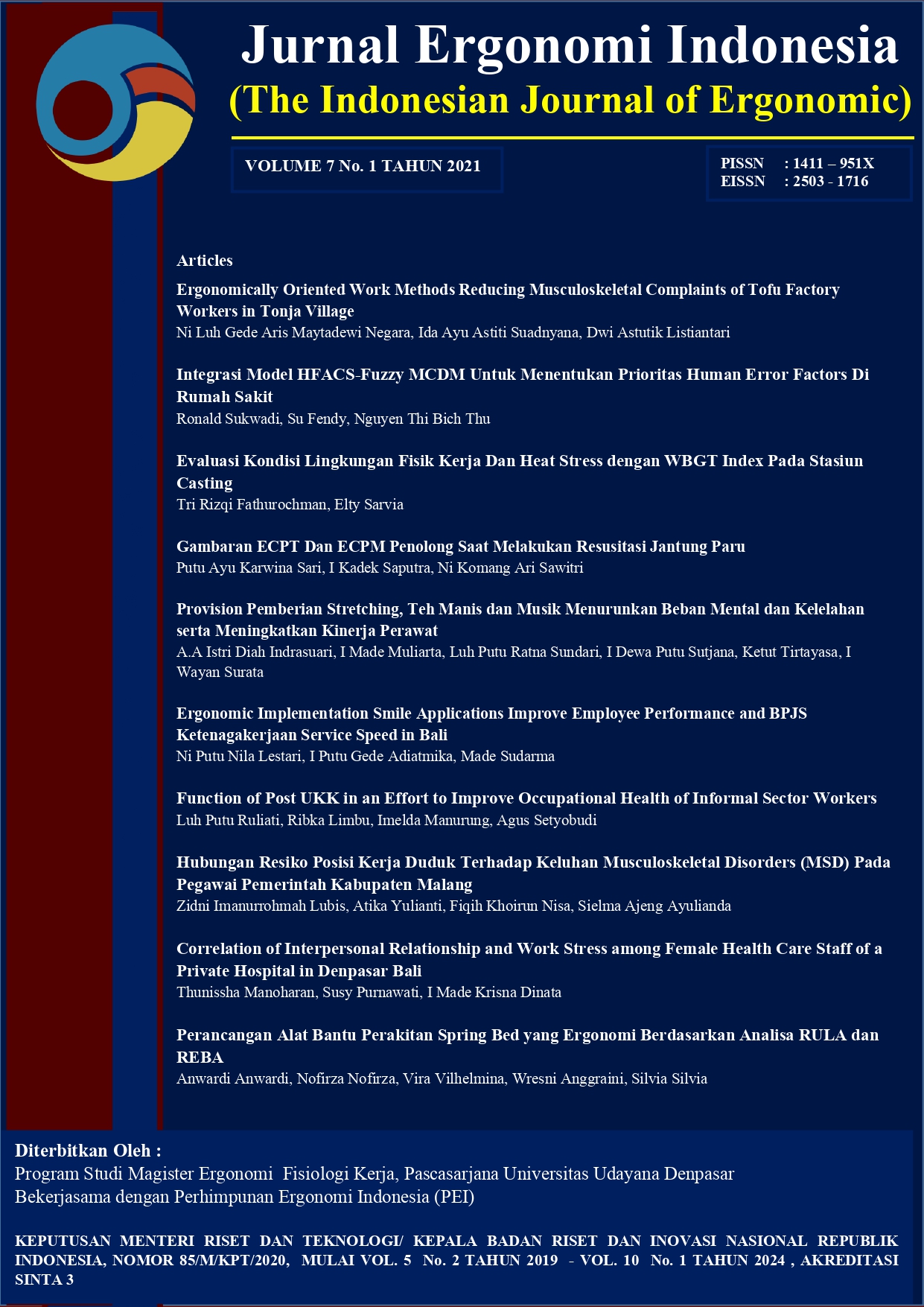Evaluasi Kondisi Lingkungan Fisik Kerja Dan Heat Stress dengan WBGT Index Pada Stasiun Casting
Abstract
Hot and noisy physical environment can cause heat stress for the operator, one example is heat exhaustion such as symptoms of dizziness or headaches. This research aims to improve physical environmental conditions so that it provide a better, convenient, and support to work activities. The results of the analysis showed that the current condition has not fulfilled the standard of lighting in accordance to Kepmenkes RI No. 1405 year 2002, has not fulfilled the standards of Kepmenkes RI No. 1405 year 2002 about the condition of noise, has not fulfilled the standard of Kepkemenakertrans Per. 13MEN/X/2011 regarding temperature conditions using WBGT. The temperature and humidity conditions are far from the optimal point on the psychometric chart according to AYAF (The Australian Institute of Refrigeration Air Conditioning and Heating) 2007. Air circulation is also not good and there is a smell of lead combustion. Therefore, there is a need for the addition of 20 lamps to illuminate the casting station, the use of ear plugs to reduce noise, the use of two evaporative cooling and four pieces of exhaust fan to reduce heat by calculation of heat reduction according to ASHRAE, 2007. Temperature drops as much as 7.68°C, approaching the optimal point is 25°C with humidity 80% if the company will use evaporative cooling. In addition, it is proposed to mount the walls surrounding the casting station to avoid heat spread to other stations with a hole underneath it for cool air inlet spilled out by evaporative cooling.
Downloads
References
ASHRAE. 2007. ASHRAE Handbook of Fundamental. Atlanta : American Society of Heating, Refrigerating, and Air Conditionng Engineers.
Devi T.W., Sabilu, Y. dan Munandar, S. 2017. Hubungan Pencahayaan, Kebisingan, Suhu Udara dengan terjadinya Stress Kerja pada Pekerta di PT. Tofico Pelabuhan Perikanan Samudera (PPS) Tahun 2016. Jurnal Ilmiah Mahasiswa Kesehatan Masyarakat, Vol. 2(6).
Irzal. 2016. Dasar-Dasar Kesehatan dan Keselamatan Kerja. Jakarta : Kencana
Kamalakannan, B., Groves, W., dan Freivalds, A. 2007. Predictive Models for Estimating Metabolic on Heart Rate and Physical Characteristics. The Journal of SH&E Research, Vol. 4(1). https://doi.org/10.3320/1.2758321
KEPMENKES RI. No. 1405/MENKES/SK/XI/02. 2002. Persyaratan Kesehatan Lingkungan Kerja Perkantoran dan Industri. Jakarta: Kementrian Kesehatan RI.
Laughton, M.A., dan Warne, D.F. 2003. Electrical Engineer’s Reference Book. Sixteenth edition. Publisher(s): Newnes.
Peraturan Menteri Tenaga Kerja Dan Transmigrasi Nomor PER.13/MEN/X/2011 (2011). Nilai Ambang Batas Faktor Fisika dan Faktor Kimia Di Tempat Kerja. Jakarta: Menteri Tenaga Kerja dan Transmigrasi RI.
Sunaryo, dan Wowo K. 2014. Ergonomi dan K3. Bandung : PT Remaja Rosdakarya. www.waterlinecooling.com/INDO-12WaterQuality.html diakses pada April 2017

















